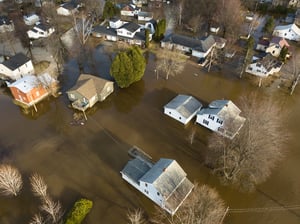 Do you remember buying your first new car? Or how about adding a teen driver to your policy? These experiences are often exciting and signify milestones in our lives.
Do you remember buying your first new car? Or how about adding a teen driver to your policy? These experiences are often exciting and signify milestones in our lives.
However, these milestones come along with the responsibility to purchase auto insurance. Buying auto insurance isn’t as exciting.
Auto insurance includes different types of coverages, such as Comprehensive, Collision, and Liability. Trying to figure out the appropriate insurance coverage needed and the appropriate insurance limits to carry can be daunting.
In today’s litigious society, it’s crucial to make sure you have adequate liability insurance limits. Currently, liability insurance is required in 49 of 50 states. The limits required in each state may be different and may only be minimum requirements.
If you’re responsible for causing an auto accident and injuring another person or damaging their property, you could be held financially liable for damages if you’re underinsured.
In the video below, Jim Schwalen, vice president of Personal Lines and Marketing will explain:
- The different types of Liability insurance limits available;
- Auto accident scenarios; and
- How the different coverage limits apply.
Remember, it’s important to buy as much liability insurance as you can afford. Big losses usually occur on the liability side. If you don’t have enough liability insurance, you may be held personally and financially liable for the injuries and property damage you’ve caused.
If you have questions about your auto insurance policy, contact your insurance agent. Finding out after a loss that you don’t have adequate liability insurance limits isn’t a good situation for you or your insurance company.
SOURCE: West Bend, Scott Stueber on May 21, 2019 10:33:35 AM
 Having your perfect wedding and buying your dream home are both exciting milestones, full of new adventure and hopeful possibility. However, both events require a significant amount of careful logistical and financial planning. There are so many little details to work out, that when challenges arise, it’s difficult to keep everything from falling apart. But have no fear! There are plenty of helpful tools to help you steer your big day and your big move into smooth sailing.
Having your perfect wedding and buying your dream home are both exciting milestones, full of new adventure and hopeful possibility. However, both events require a significant amount of careful logistical and financial planning. There are so many little details to work out, that when challenges arise, it’s difficult to keep everything from falling apart. But have no fear! There are plenty of helpful tools to help you steer your big day and your big move into smooth sailing. Warm spring days are a nice preview of what’s to come as we approach summer. However, spring weather is also very unpredictable. Temperatures fluctuate between warm and cool. A stretch of nice sunny days can be followed by wet stormy days. Lightning, wind, rain, and hail can cause damage to your property very quickly.
Warm spring days are a nice preview of what’s to come as we approach summer. However, spring weather is also very unpredictable. Temperatures fluctuate between warm and cool. A stretch of nice sunny days can be followed by wet stormy days. Lightning, wind, rain, and hail can cause damage to your property very quickly. After a long, cold winter, many of us yearn for the transition to spring. More daylight, chirping birds, increased outdoor activity, and the start of Major League Baseball are all signs that we’re getting closer to warmer days.
After a long, cold winter, many of us yearn for the transition to spring. More daylight, chirping birds, increased outdoor activity, and the start of Major League Baseball are all signs that we’re getting closer to warmer days. Now that spring’s here, it’s time to give your home a post-winter scrub down. While it feels great opening the windows and letting the fresh air in, there’s much more work to do. Besides your regular house cleaning, here are some things that often get overlooked or forgotten.
Now that spring’s here, it’s time to give your home a post-winter scrub down. While it feels great opening the windows and letting the fresh air in, there’s much more work to do. Besides your regular house cleaning, here are some things that often get overlooked or forgotten. As the weather improves, you may be thinking about getting your bicycle out of storage for the first ride of the season. Whether you ride solo, with a group of friends, or with your family, it’s always nice to get back in the saddle. However, before doing so, it’s probably best to plan and ease into a new bicycling season. Not preparing for your ride ahead of time can lead to frustration and injury.
As the weather improves, you may be thinking about getting your bicycle out of storage for the first ride of the season. Whether you ride solo, with a group of friends, or with your family, it’s always nice to get back in the saddle. However, before doing so, it’s probably best to plan and ease into a new bicycling season. Not preparing for your ride ahead of time can lead to frustration and injury.